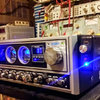I'd like to let everyone who's helped me know why the antennas not in the air yet. I have a a very bad back. when i say bad think about the worst back injury someone could have then times that by ten. I need help with the install and if I could've done it myself it would've be in the air weeks ago.
Now. If this is fact I'm going to have to make a 110 " jumper. Correct? Well if this is the fact. This will be the catalyst for putting the brand new 2000 instead of the a99. I mentioned it in an earlier post that the only reason for sticking with the a99 was the fact i received not a singal rfi complaint and didn't want to push my luck. I'm done putting my station together as my cousin stopped by yesterday and the setup is ready to go. It's the neatest wiring job that a station i owned ever had. No cobwebin . So neat i cant beleve it mysrlf. Ill take a few pics tomorrow. Antennas going up on Wednesday rain day Thursday. Like I said if this is fact the 2000"s going up. All I needed was an excuse for either grabbing the box with the a99 or 2000 in it and thismaybe it..
you'll be happier with the imax2000 anyway.
be sure to use the ground plane kit with it, as this antenna actually benefits from having one.
i realize that you already bought the other stuff, but just as an FYI; palomar engineering makes a kit that includes a bunch of snap on ferrite beads for common mode filtering.
using this kit, you dont need any breaks in the coax, extra connectors, or anything like that. (this is what is inside your MFJ unit BTW)
it costs about 30 bucks.
with the IMAX, you can put the CMC right at the feedpoint.
LC



